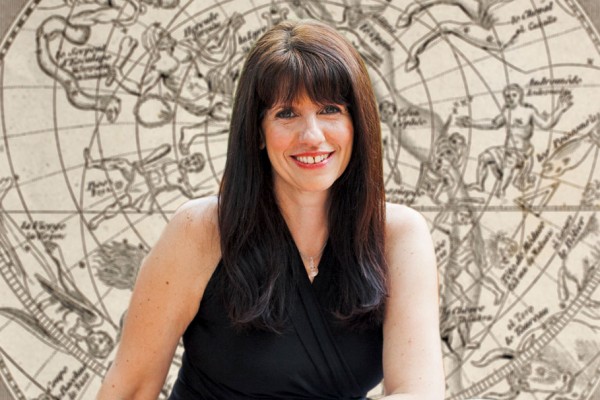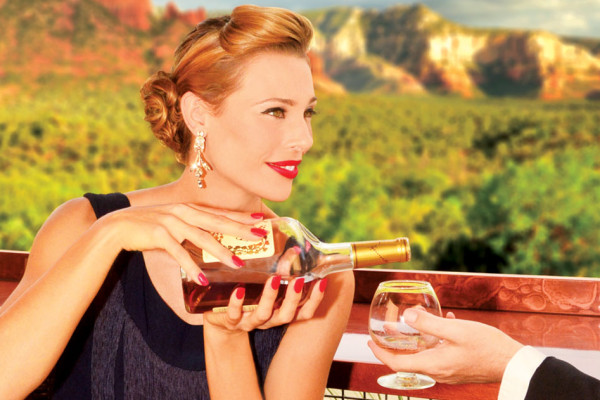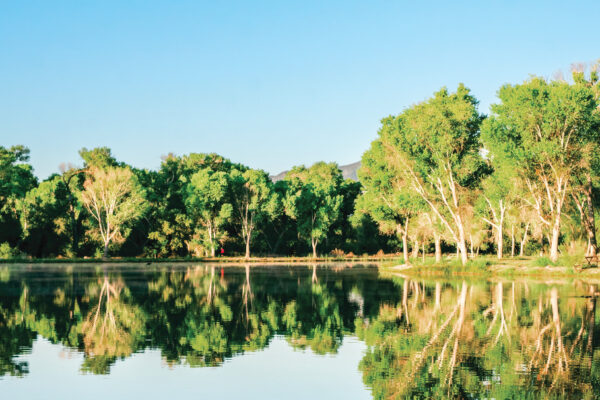Continued (page 2 of 6)
So what year did your family move to Sedona?
Early 1977, and then we moved away at the end of 1978. He really loved it – moving away had nothing to do with not liking Sedona. He didn’t get two or three weeks off. It would be two days, and it just didn’t work. We ended up going to Las Vegas, which we all hated. But it was 40 minutes by plane – he could do turnarounds if he had to. I only stayed there less than a year, and then I came rushing back here. When we first moved to Sedona, I was bored out of my mind. I came from London, and I was having a very heavy social life with lots to do. Every night there was an opening or a concert or something you wanted to go to. I was in Sedona writing letters to everybody and thinking I had never written so much in my life.
What did Orson do while he was in Sedona?
Nothing. When he came home, the doors closed, the bathrobe was put on, and it was nothing. He watched TV incessantly. It was the first time we had a remote. In England, he would sit in front of the TV and change channels over and over. And he worked. Even when he was home, he was writing – there would be a table full of papers and a typewriter. He was always working on something. He wasn’t on the phone; it was all creative. He couldn’t stop. He spent time with us, but he wasn’t into the outdoors.
During the period he lived here, there was a thin, locally produced magazine called Sedona Life, and he was listed on its masthead as a member of its board of advisors. How did he come to be involved in the publication?
It was my fault. I knew the woman who ran it, and I asked him to be involved as a favor to her. He didn’t do anything for it. He didn’t write for it. I was always asking him horrible favors for my friends, and he always said yes.
We know you’re an animal lover. Did your family have pets while you lived here?
My parents were huge animal lovers. My dad had Kiki. She was this tiny black teacup poodle. He invented a story that it belonged to a cutter, and he didn’t want it so my dad wound up with the poodle. Of course that isn’t true. He bought the poodle. He refused to admit it. So he and Kiki were inseparable. They went everywhere together. When he arrived home, Kiki was with him. It was bizarre, this large man with this tiny dog. He was mostly a dog person, but he liked cats, too. At the time, we had Kiki and my little Jack Russell terrier, who was 15 by then – she lived to be 22. And there was a Pekinese my mother had. Then there was the dog we got from the humane society here. At the time, it was outdoors where the dog park is now located. This dog was huge. I don’t know what he was – we got him as a puppy. He became so big we had to have a collar made for him. That was our ménage when we were here.
I have this great photo of my dad with a cigar in his mouth, and he’s holding Kiki. He hated to have his photo taken. He didn’t like how he looked, ever. Hence all the false noses while he was making movies. He was always hiding behind makeup. You could never take a picture at home. I have so few pictures because he hated it. But this one time, it was about Kiki.
Do you think of your father as an international globetrotter?
I’d say he was international, but that’s not even right because he was so American. He traveled frequently because he had to. I think you get very used to that way of life, and you like it. I know I do. I miss it terribly. It’s lovely to have a place to come home to, which we didn’t have really. We were living in hotels and rentals – we lived in rentals in Sedona. We had a house in Italy and Spain, but it was mostly hotels. He was a true American, though. He was born in the Midwest. People don’t think of him that way. They think he was English. He traveled to China when he was young. His father was an inventor – quite crazy – and his mother was a suffragist. She died when he was 9, which devastated him. She was the one who brought out his artistic side.



